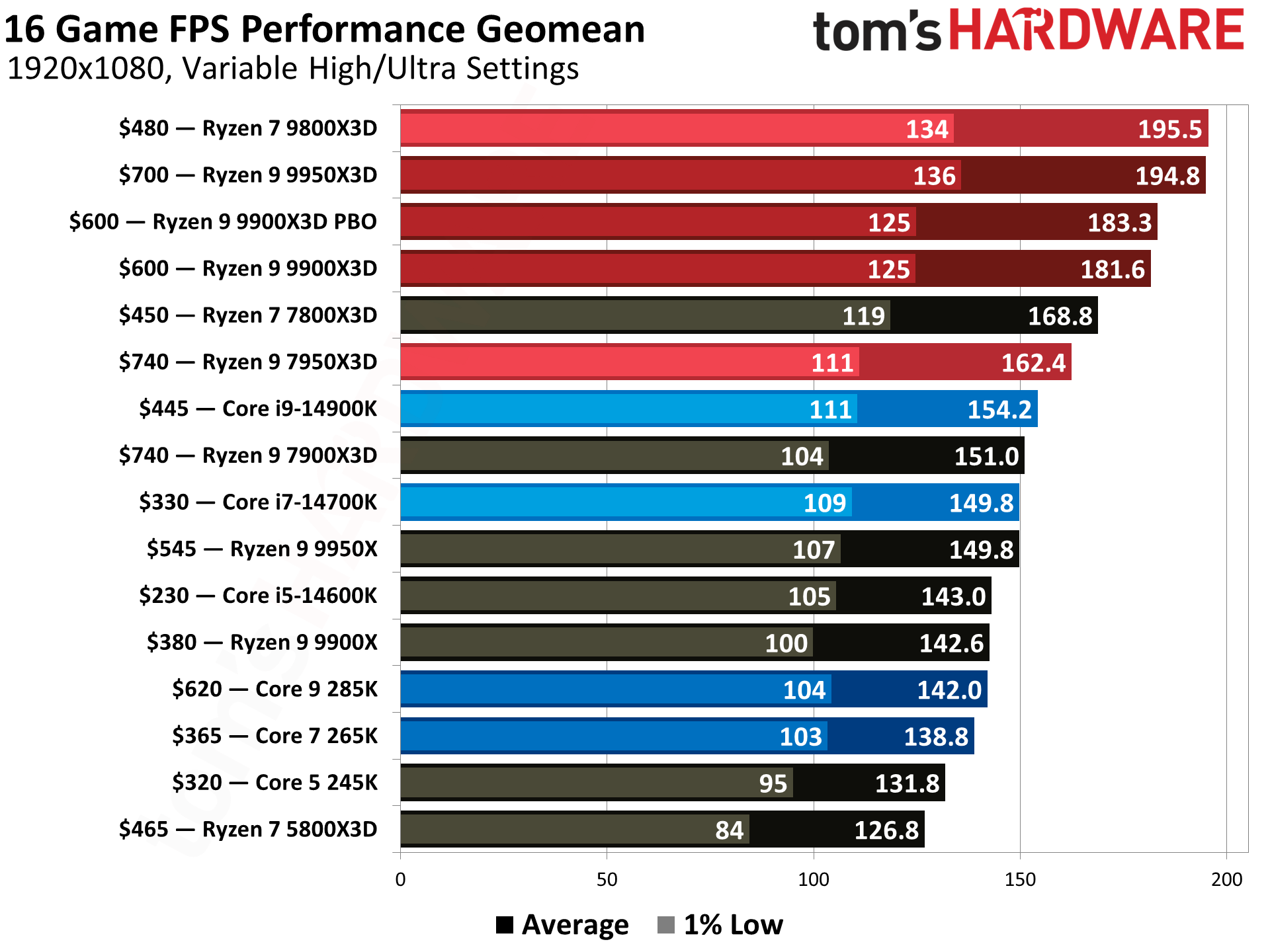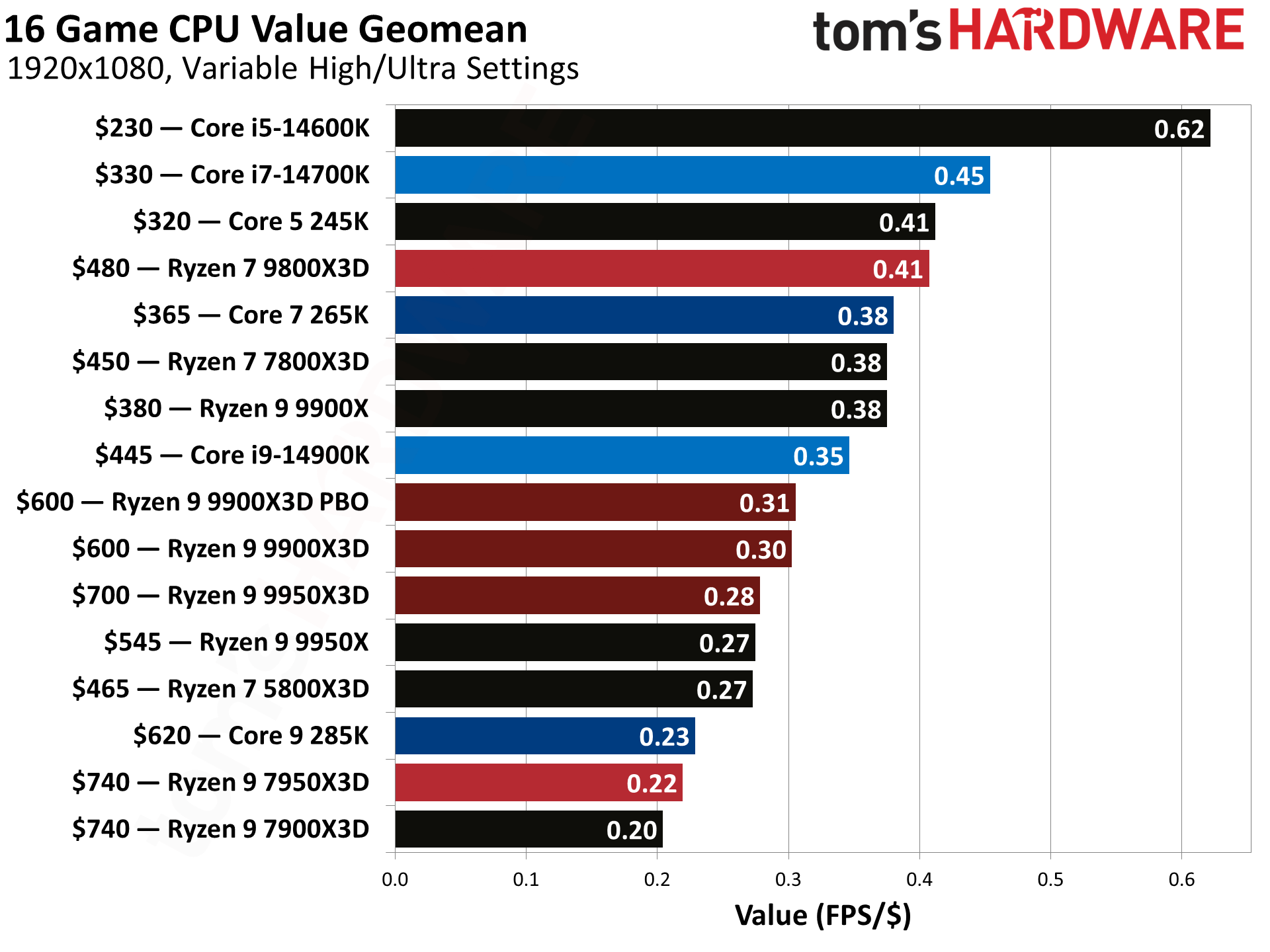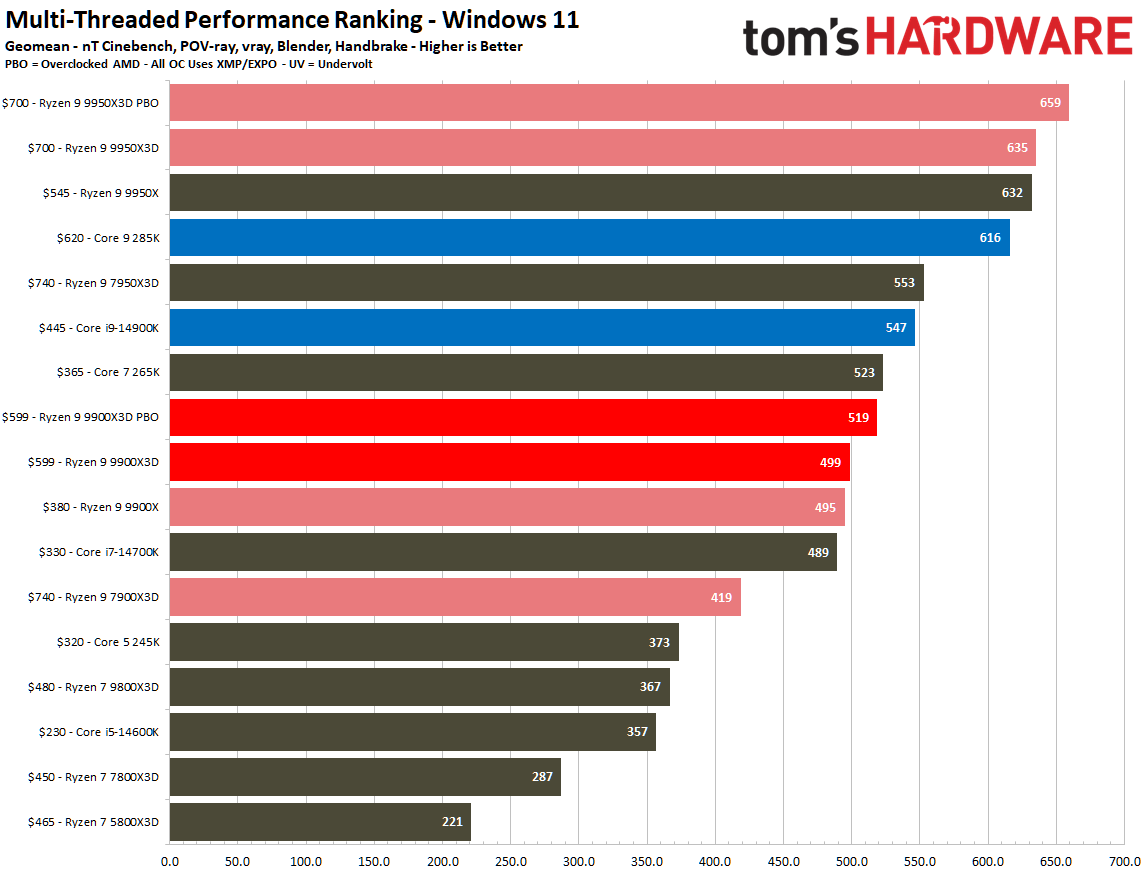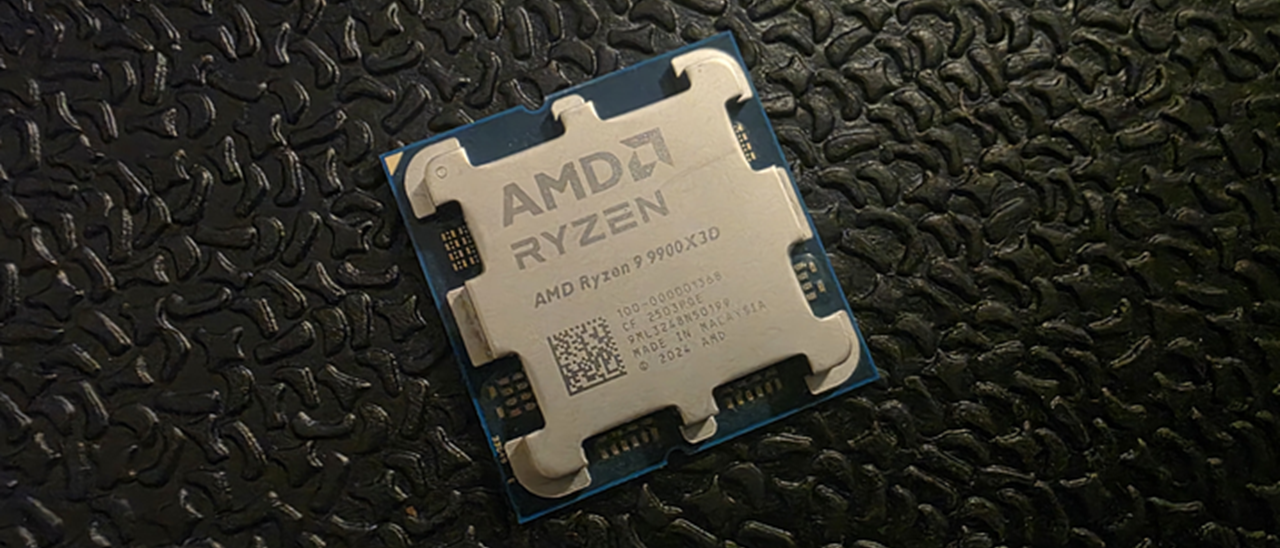Why you can trust Tom's Hardware
The $600 Ryzen 9 9900X3D is the middle child in AMD's gaming-optimized X3D lineup, and those willing to pay the extra $200 premium over the standard Ryzen 9 9900X for the game-boosting tech are going to be primarily interested in gaming performance with a side of additional performance in productivity and heavy multitasking workloads. However, while the 9900X3D is now the fastest 12-core gaming chip on the market, it faces stiff competition from AMD's own lower- and higher-priced chips, making its $600 price tag hard to justify, just like the previous-gen model.
Unfortunately for Intel, neither of its competing chips can make a compelling case in gaming against the Ryzen 9 9900X3D, unless you're looking for a lower-priced value alternative in the $445 Core i9-14900K (which may not be a great value after factoring in power use over time). The Intel chips are strong alternatives for those interested solely in productivity work, but they aren't strong contenders against the 9900X3D's niche target market.
Below, we have the geometric mean of our gaming test suite at 1080p and a cumulative performance measurement in single- and multi-threaded applications. We conducted our gaming tests with an Nvidia RTX 5090, so performance deltas will shrink with lesser cards and higher resolution and fidelity settings.




In 1080p gaming, the 9900X3D is 28% faster on average than Intel's current-gen Core Ultra 9 285K and 18% faster than Intel's fastest gaming chip, the previous-gen Core i9-14900K. As such, the similarly priced 285K isn't competitive. However, the Core i9-14900K costs $155 (26%) less for roughly 15% less performance in gaming, giving it some room as a value alternative, especially in light of its faster performance in productivity applications.
Speaking of which, the $445 Core i9-14900K is 10% faster in multi-threaded work than the Ryzen 9 9900X3D and 3% faster in single-threaded. Meanwhile, the Core Ultra 9 285K is 23% faster than the 9900X3D in threaded workloads and 7% faster in single-threaded. Still, its woefully slower gaming performance and similar pricing make it unattractive compared to the Ryzen 9 9900X3D.
The 9900X3D's real competitors come from AMD's own stable and bracket it on both sides of the pricing equation. If you're solely interested in gaming, the Ryzen 9 9800X3D costs $120 (25%) less than the 9900X3D but is roughly 8% faster in gaming. Conversely, the 9900X3D is 36% faster in multi-threaded applications, but if you don't need more heavy lifting in productivity apps or don't commonly do heavy multitasking while gaming, the 9800X3D is the chip for you.
The $700 Ryzen 9 9950X3D is better still. For $100 (20%) more than the 9900X3D, you get 7% more gaming performance, matching the fastest gaming chip on the market, 27% more performance in heavily-threaded work, and 3% more performance in single-threaded applications. If you're already willing to spend $600 for a gaming-optimized chip that's also great at productivity work, earmarking an extra $100 for the Ryzen 9 9950X3D is clearly the better choice.
The Ryzen 9 9950X3D and the Ryzen 7 9800X3D are more future-proof gaming chips, too. Both chips essentially operate as an eight-core processor during gaming, while the Ryzen 9 9900X3D operates as a six-core processor. Games are inevitably making better use of higher core and thread counts as the years go on, and spending $600 for what is essentially a six-core gaming chip, albeit with a large L3 cache, doesn't feel like a wise investment for longevity.
Overall, the best CPU for most gamers remains the Ryzen 7 9800X3D, while the Ryzen 9 9950X3D is the best option for higher performance in gaming and more demanding productivity tasks. The Ryzen 9 9900X3D will need a significant price adjustment to earn our recommendation.
- MORE: Best CPU for gaming
- MORE: CPU Benchmark Hierarchy
- MORE: Intel vs AMD
- MORE: How to Overclock a CPU
Get Tom's Hardware's best news and in-depth reviews, straight to your inbox.
Current page: Ryzen 9 9900X3D — Caught in the Middle
Prev Page AMD Ryzen 9 9900X3D Power Consumption, Efficiency, Test Setup
Paul Alcorn is the Editor-in-Chief for Tom's Hardware US. He also writes news and reviews on CPUs, storage, and enterprise hardware.
